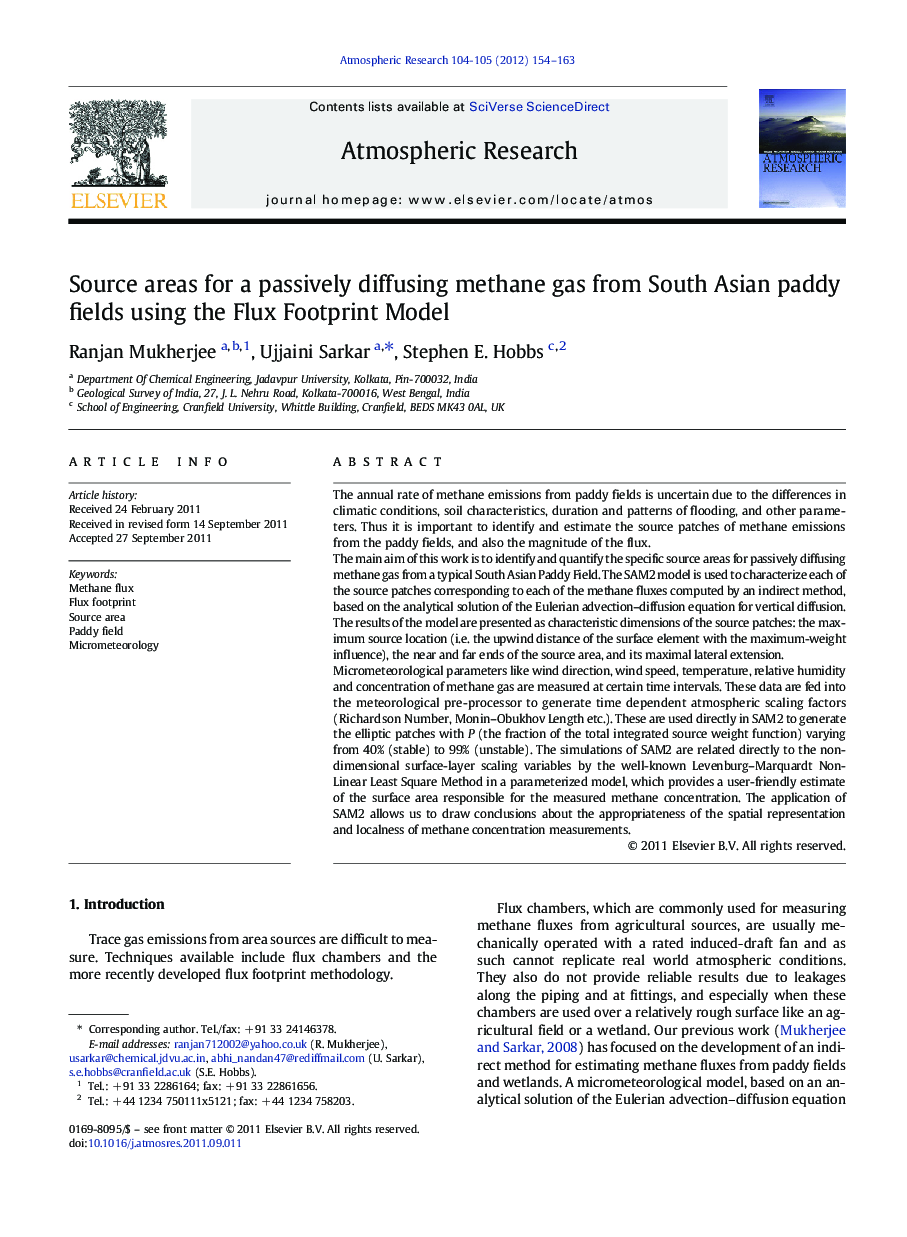| Article ID | Journal | Published Year | Pages | File Type |
|---|---|---|---|---|
| 6344071 | Atmospheric Research | 2012 | 10 Pages |
The annual rate of methane emissions from paddy fields is uncertain due to the differences in climatic conditions, soil characteristics, duration and patterns of flooding, and other parameters. Thus it is important to identify and estimate the source patches of methane emissions from the paddy fields, and also the magnitude of the flux.The main aim of this work is to identify and quantify the specific source areas for passively diffusing methane gas from a typical South Asian Paddy Field. The SAM2 model is used to characterize each of the source patches corresponding to each of the methane fluxes computed by an indirect method, based on the analytical solution of the Eulerian advection-diffusion equation for vertical diffusion. The results of the model are presented as characteristic dimensions of the source patches: the maximum source location (i.e. the upwind distance of the surface element with the maximum-weight influence), the near and far ends of the source area, and its maximal lateral extension.Micrometeorological parameters like wind direction, wind speed, temperature, relative humidity and concentration of methane gas are measured at certain time intervals. These data are fed into the meteorological pre-processor to generate time dependent atmospheric scaling factors (Richardson Number, Monin-Obukhov Length etc.). These are used directly in SAM2 to generate the elliptic patches with P (the fraction of the total integrated source weight function) varying from 40% (stable) to 99% (unstable). The simulations of SAM2 are related directly to the non-dimensional surface-layer scaling variables by the well-known Levenburg-Marquardt Non-Linear Least Square Method in a parameterized model, which provides a user-friendly estimate of the surface area responsible for the measured methane concentration. The application of SAM2 allows us to draw conclusions about the appropriateness of the spatial representation and localness of methane concentration measurements.
⺠Flux chambers cannot replicate the real world atmospheric conditions. ⺠Specific source area corresponding to a particular methane flux was predicted. ⺠SAM2 model was also validated. ⺠Micrometeorological parameters were measured. ⺠Atmospheric scaling factors like the Richardson Number, Monin-Obukhov Length were computed.
